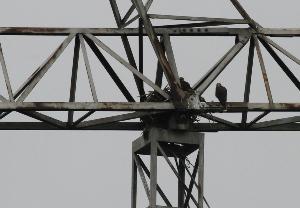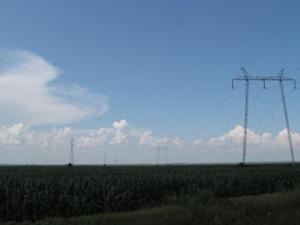Drazenko Rajkovic
During the project, Saker Falcon population will be surveyed, nest platforms will be made, set-up at potential and known nesting places and media campaign will be conducted throughout the project duration.

Nestlings of Saker Falcon. © Otto Szekeres.
The Saker Falcon is globally endangered raptor species (IUCN), which inhabits Eastern Europe and major parts of Central Asia. In Serbia it occupies lowland agricultural regions mostly at northern part of country (Vojvodina Province, Stig, Macva and Branicevo districts). Serbian population was estimated to 40-60 pairs, which is the second largest in Central Europe (about 14% of European population). Due to highly expressed negative factors, such as loss of habitat, killing by pigeon fanciers and pesticide poisoning, Serbian population has significantly declined at last several decades. Thus, conservation of this raptor species is among the nature conservation priorities in Serbia and Europe.

Typical breeding habitat of Saker Falcon. © Drazenko Rajkovic.
The most important aim of project is determining the distribution and population size of the Saker Falcon and to make a real contribution for its conservation. After the successful completion of the project we will have conducted a complete set of baseline data for this raptor species, which will enable us to better understand its population dynamics and specific conservation needs. By applying best conservation practices for this species we will ensure its future preservation. One of the already known main threats to the Saker Falcon population in Serbia is loss of adequate nesting sites. By providing safe nesting places, by installing artificial nests, we will contribute to population increase of this species. Also, successful completion of our project activities will undoubtedly contribute to the improving status of this raptor species in neighbour countries (Hungary and Romania).
The data collected will be available to all relevant authorities and other decision makers. Information collected during this project will enable more accurate application and implementation of adequate conservation measures and implementing the obligations stipulated by international conventions. An overall contribution to Saker Falcon conservation in Serbia will be made by launching an effective media campaign in local and national media which will stress out the conservation threats that this species is facing in Serbia and necessary action which will insure its preservation. Key stakeholders will be involved in the work (e.g. electricity provider companies for installing nests on pylons). Also volunteers will be involved in the all phases of project duration partly as a mean of raising public awareness.